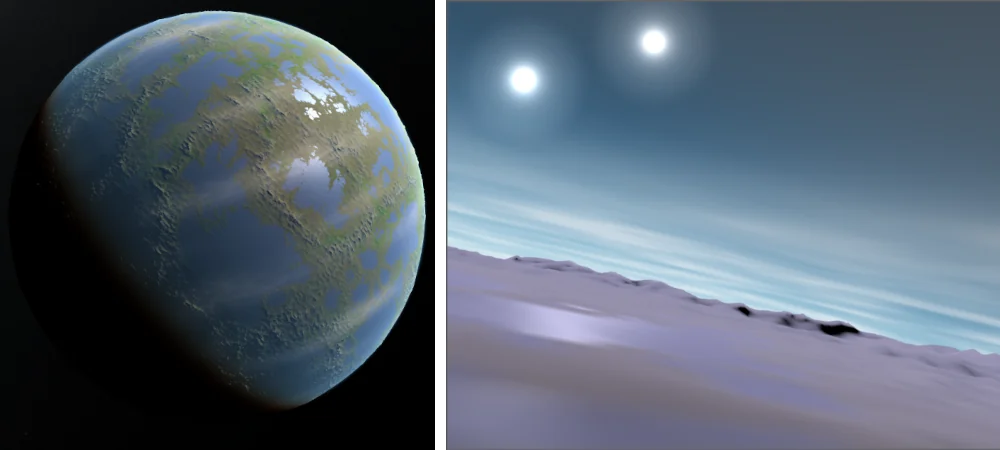Tag: Procedural
Supercharging Exoplanets
A short report on the new developments in exoplanet datasets in Gaia Sky
A couple of years ago I wrote about the procedurally generated planets in Gaia Sky. In this post, I provided a more or less detailed technical overview of the process used to procedurally generate planetary surfaces and cloud layers.
Since then, we have used the system to spice up the planets in the planetary systems for which the Gaia satellite could determine reasonable orbits (see the data here, and some Gaia Sky datasets for some of those systems here, including HD81040, Gl876, and more).
However, with the upcoming Gaia DR4, the number of candidate exoplanets is expected to increase significantly, rendering the “one dataset per system” approach unmaintainable. In this post I describe some of the improvements made with regards to exoplanets in Gaia Sky, in both the handling of large numbers of extrasolar systems seamlessly, and in the brand new, improved procedural generation of planetary surfaces and clouds.
Procedural Generation of Planetary Surfaces
Generating realistic planet surfaces and moons
Edit (2024-07-08): We have written a new post to expand on this one. Check it out here.
Edit (2024-06-26): As of Gaia Sky 3.6.3, the procedural generation process has been moved to the GPU. Even though the base method is the same, a number of things have changed from what is described here. For instance:
- The generation is now almost instantaneous, even with high resolutions.
- Gradval and Value noise are no longer available.
- Voronoi and Curl noise are now available.
- The process takes into account a temperature layer.
- We have introduced terraces, with the respective parametrization.
I have recently implemented a procedural generation system for planetary surfaces into Gaia Sky. In this post, I ponder about different methods and techniques for procedurally generating planets that look just right and explain the process behind it in somewhat detail. This is a rather technical post, so be warned. As a teaser, the following image shows a planet generated using the processes described in this article.
